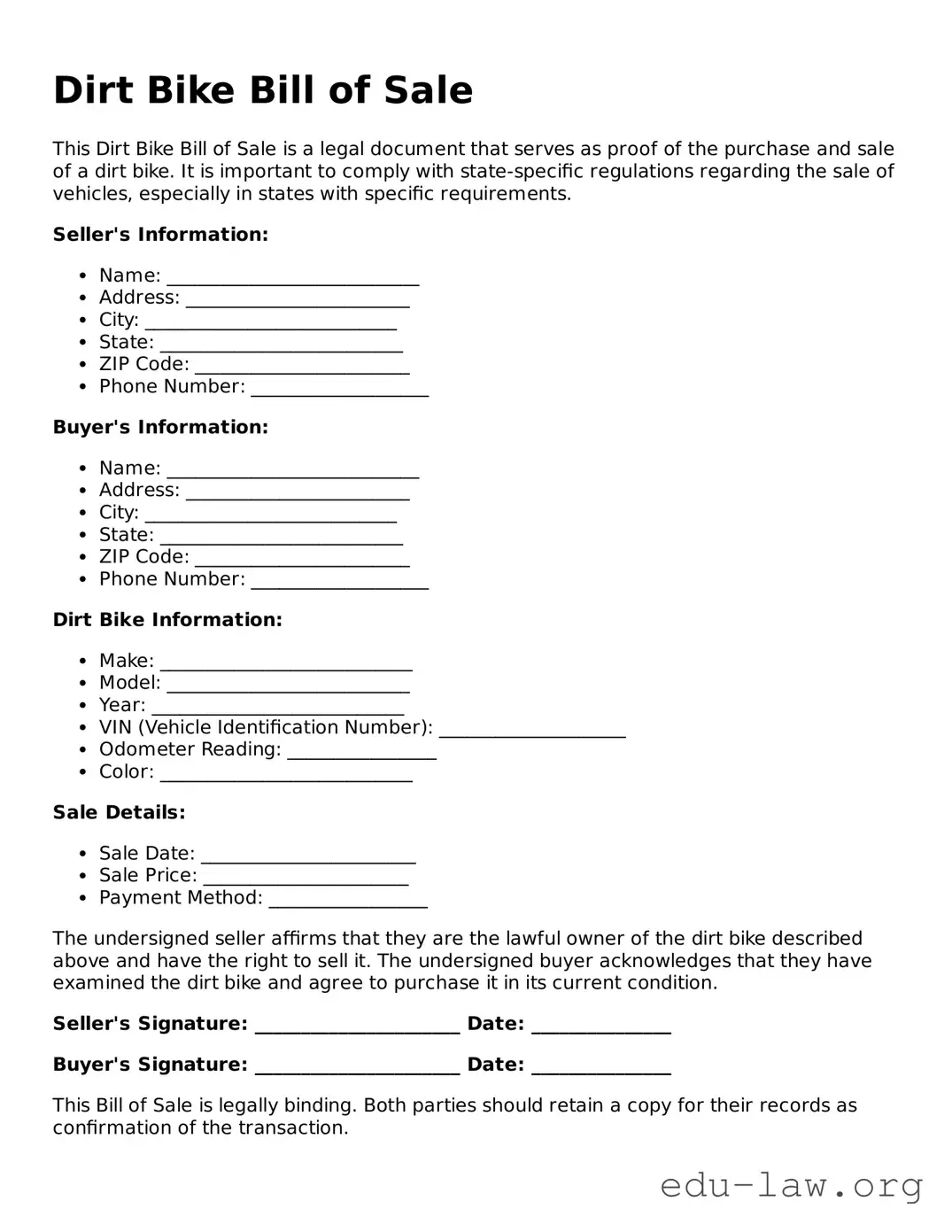What is a Dirt Bike Bill of Sale?
A Dirt Bike Bill of Sale is a document that records the transfer of ownership of a dirt bike from one person to another. It includes essential details like the buyer and seller's information, the bike's description, and the sales price. This document serves as proof of the transaction and can help protect both the buyer and the seller legally.
Is a Bill of Sale required for a dirt bike?
While not all states mandate a Bill of Sale for dirt bikes, it is generally a good practice to use one. It helps provide a clear record of ownership. If you're registering the dirt bike or if there is any dispute in the future, a Bill of Sale could be essential.
What information should be included in the Bill of Sale?
A comprehensive Bill of Sale should include the following details: names and addresses of both the buyer and the seller, a description of the dirt bike (make, model, year, VIN), the sale price, the date of sale, and signatures from both parties. It's best to be as clear and detailed as possible to prevent confusion later.
Can I create my own Bill of Sale?
Yes, you can create your own Bill of Sale. Templates are readily available online, and you can customize them to fit your needs. Just ensure that you include all the necessary information to make it legally binding.
Do I need to have the Bill of Sale notarized?
Notarization is not typically required for a Bill of Sale to be valid. However, some states or situations may benefit from having the document notarized for added credibility. If you're unsure, check your state's requirements or consult with an expert.
What happens if I lose the Bill of Sale?
If you lose the Bill of Sale, it could complicate proving ownership of the dirt bike. If possible, try to obtain a copy from the seller. Otherwise, you may have to provide alternative proof of ownership if any issues arise.
Does the Bill of Sale include any warranties?
Generally, a Bill of Sale does not include warranties unless explicitly stated. It is essential to clarify whether the dirt bike is sold "as is," which means no guarantees about its condition. Any warranties or promises should be written into the Bill of Sale to be legally binding.
What should I do after completing the Bill of Sale?
After completing the Bill of Sale, both the buyer and seller should keep a signed copy for their records. Additionally, the buyer may need to register the dirt bike with their state’s motor vehicle department, which might require presenting the Bill of Sale.
Is it possible to cancel a Bill of Sale?
Cancelling a Bill of Sale can be challenging, as it represents a completed transaction. Both parties would typically need to agree to void the agreement and document it in writing. Remember to consult local laws as they vary by state.
Are there any tax implications associated with a Bill of Sale?
Yes, there may be tax implications related to the sale of a dirt bike. Depending on your state, sales tax may be applicable when purchasing the bike. Keep your Bill of Sale as it may be needed when filing taxes or for registering the vehicle, as it provides proof of the price paid.
